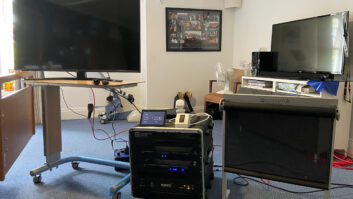With the first half of the year wrapping up, I was talking to a couple of other business owners about how their year looks. The good news is that everyone is optimistic that 2017 will be as good or better than 2016. Some are maybe a tick or two down, but they all felt that was attributable to timing—some large jobs wrapped up right before the holidays, pulling that revenue forward into 2016 as opposed to delaying it to 2017. One common theme I heard, though, was not how to register incremental gains in business, but how can a company make that next big leap?

Image: Thinkstock
One of the owners I was speaking with has a company I helped get off the ground a few years ago as part of the Home Theater Rebuild. He has done a great job going from nothing to about $450,000 today. Now he is strategically thinking about how to make that leap to $1 million and more. We had a long conversation, and here are some of the strategies and options that we brainstormed.
1. Get Out of Your Comfort Zone
This is particularly true for the sales side of things. Instead of passively waiting for partners you’ve worked with in the past to call (contractors, designers, and architects), actively reach out them as well as new contacts and sell yourself and your company. If you don’t feel comfortable doing it yourself, then hire a salesperson and incentivize them based on business that they bring in from new contacts, as well as existing ones.
2. Hire Back Office Help
One thing holding many smaller companies back is that the owner is in the field either doing the technical work, project managing the job sites, or checking in on multiple jobs a day. But they are also doing the marketing, finance, proposal writing, tech support calls, and everything else that comes up. One person can’t do it all, and we all know how hard it is to find qualified techs and installers. If you can’t get out of the field, then get out of the office and hire people internally or outsource to specialists (accountants, OneVision Resources for tech support, a virtual assistant to answer calls, etc.)
3. Upgrade Your Offerings and Increase the Average Ticket
Are you selling mainly single-room solutions? How about working with a home automation brand that has a single-room offering, but also opens up the door to lighting, shading, HVAC control, IP cameras, distributed video, and host of other categories? Check out Control4, Crestron, Savant, ELAN, and URC Total Control. Are you still using Airport Extremes or (heaven forbid) ISP networking solutions? Buy and get hands-on with professional-grade networking gear from Araknis, Pakedge, or Luxul. Don’t feel comfortable with the networking? Partner with Access Networks, and they will do the configuration for you based on your specs.
4. Expand into Adjacent Categories
While this is not something I find easy to do, and I have been burned in the past, others swear by it. Get licensed to install security systems (if required in your area), sell and integrate pool and spa controls, interface with irrigation systems. There are also more regularly integrated adjacencies that might be easier to expand into, and some of these are also quite profitable: shading, outdoor lighting, HVAC integration, and IP cameras come to mind. We try to stick with product sold and supported by Crestron, so we know it will work and the integration won’t just break down the road. This means shading and HVAC is well within our realm, but we avoid pool and spa control whenever possible.
5. Hire and Train Additional Installers and Techs
You can’t do it all by yourself as the business grows. You need to have a strong team in place to support the growth. You’ll need to be able to have more than one install team in the field at any given time, as well as service techs. Hire and train before you need them, or else the growing pains will threaten everything you’ve worked so hard to build.
As for my friend looking to get to $1 million, chances are he will employ a combination of two or three strategies, but I feel confident that he will get there in the next year or two. He’s already become a Control4 dealer and has taken on Araknis as his networking line. He has also started working with some shading companies to offer that category without having to sell and install it himself. Instead, he will get a sales commission for every job he refers, and that means he can be involved in the specification of the shading platform to be sure it integrates with Control4 easily and reliably. He also has some part-time installers that he is getting up to speed. These were guys who were in construction who lost their jobs, or wanted something else. He’s building a pool of trained and reliable people that he can call on when needed and he can hire full time as soon as the business warrants.
How have you made the larger jumps in revenue in your business, be it from $50,000 to $200,000, or $2 million to $5 million?







